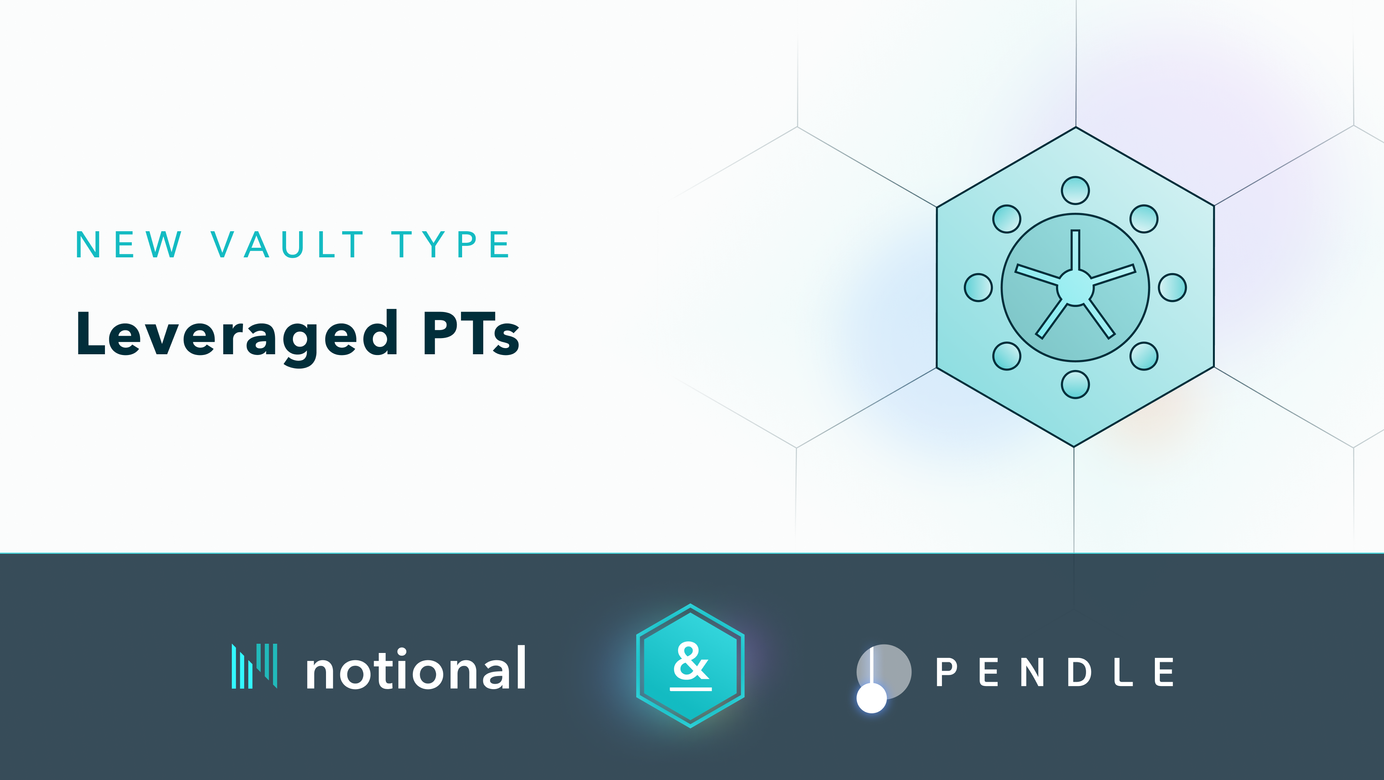
New Strategy Launch: Leveraged PTs
The moment you’ve been waiting for is finally here! Notional has launched leveraged Pendle PTs and introduced a fresh wave of yield opportunities on both USDC and ETH deposits.
This launch opens up a new era of fixed-rate, leveraged yield products that simplify high-APY earning strategies. Here’s a comprehensive guide to the strategies, how they work, and tips to maximize your returns.
What’s Available?
Notional is launching three leveraged PT strategies, each available as a one-click experience:
- Dec 2024 USDe PTs: USDC deposit on Mainnet
- Mar 2024 USDe PTs: USDC deposit on Mainnet
- Dec 2024 ezETH PTs: ETH deposit on Mainnet
With these strategies, you can earn up to 70% on USDC and 30% on ETH. Leveraging PTs provides an enhanced APY by borrowing against your deposit to acquire even more PTs.
How Leveraged PTs Work:
Here's the step by step process.
- Deposit: You start by depositing USDC or ETH into the chosen strategy.
- Leverage: Notional’s vaults borrow additional funds from the lending market.
- Execution: The vaults then buy and hold PTs with the combined capital.
This process happens seamlessly in a single transaction. Notional automates the leveraging, lending, and PT purchases so you don’t have to worry about the details.
APY Calculation: Maximizing Your Yield
Your APY will depend on three core factors:
- PT APY: The fixed rate on the PT.
- Borrow Rate: The rate you pay to borrow on Notional.
- Leverage: How much leverage you choose to take.
Example Calculation for Dec 2024 USDe PTs:
- PT APY: 14%
- Notional Borrow Rate: 10%
- Max Leverage: 7x
Using these figures, your APY calculation would be:
Max APY = 14% + (14% - 10%) * 7 = 42% APY
The result is a potential 42% APY, combining a high PT yield with low borrowing costs. Remember, higher PT APYs, lower borrowing costs, and increased leverage can elevate your overall APY.
Risks to Be Aware Of
1. Liquidation Risk
Leveraged PTs expose you to price fluctuations in the underlying token (like ezETH or USDe) and the PT itself. A sharp decline in the PT’s price or a depeg in the underlying token could trigger liquidation. Always monitor your leverage to mitigate this risk.
2. Negative APY
If the Notional borrow rate rises above the PT’s APY, it can result in a negative APY. To avoid this, consider using Notional’s fixed borrow rate, locking in your borrowing costs for a predictable return.
Fixed Borrow Rate: Your Secret Weapon
For the first time, Notional offers leveraged PTs with a fixed borrow rate option. This feature lets you lock in a fixed leveraged APY.
By pairing a fixed borrow rate with a high PT APY, you can avoid variable rate spikes and yield drops. This allows you to achieve leveraged returns that are also stable - the best of both worlds!
Managing Maturities
The PT and Notional fixed borrow terms have close maturities but may not align precisely. Here’s what to know about handling maturities:
- When Borrow Matures Before PT: Your borrow will convert to a variable rate at maturity and you will earn a leveraged APY based on the variable borrow rate until the PT matures.
- When Borrow Matures After PT: Once the PT matures, you'll want to exit your position and your borrow will still be open. Closing out your fixed borrow on exit will include additional transaction cost.
Either way, when the PT matures, you stop earning yield but interest on your debt continues to accrue. Closing your position when the PT matures is important to optimize returns and avoid unnecessary interest costs.
Get Started with Leveraged PTs
Notional’s new leveraged PTs give you an accessible, automated path to high APY yields through fixed rates and strategic leverage. Whether you’re seeking stable returns on USDC or ETH, this launch is only the beginning of what’s possible with leveraged yield strategies on Notional.
Notional Finance Newsletter
Join the newsletter to receive the latest updates in your inbox.







